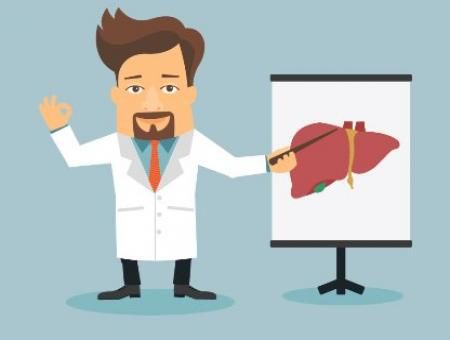
To Book an Appointment
Call Us+91 92688 80303Addressing Common Liver Issues in Diabetes: Connection and Risks
By Dr. Sanjiv Saigal in Gastroenterology, Hepatology & Endoscopy , Liver Transplant and Biliary Sciences
Apr 26 , 2024 | 1 min read
Your Clap has been added.
Thanks for your consideration
Share
Share Link has been copied to the clipboard.
Here is the link https://www.maxhealthcare.in/blogs/liver-disease-in-diabetes
The relationship between diabetes mellitus and liver disease is complex and multifactorial, with each condition potentially exacerbating the other. Diabetes can increase the risk of developing non-alcoholic fatty liver disease (NAFLD), now named Metabolic Dysfunction-Associated Steatotic Liver Disease (MASLD). On the other hand, liver disease, particularly advanced stages such as cirrhosis, can lead to insulin resistance and glucose intolerance, potentially resulting in diabetes. Cirrhosis can also affect the liver's ability to regulate glucose levels, leading to diabetes.
Diabetic patients face a higher incidence of liver disease compared to the general population. Fatty liver is heavily associated with insulin resistance, a marker of diabetes. As diabetes progresses, it leads to the accumulation of fat in the liver. The combination of diabetes, dyslipidemia, hypertension, and obesity is referred to as metabolic syndrome. More than half of these patients are likely to have fatty liver.
Simple fatty liver in people with diabetes can progress to inflammation and liver cell damage, leading to fibrosis (scarring) of the liver. Advanced fibrosis can progress to cirrhosis and sometimes liver cancer. Poorly controlled diabetes can hasten the progression of fatty liver and increase the risk of developing advanced liver disease. The combination of fatty liver disease and diabetes has a synergistic effect, accelerating the progression of liver damage.
Diagnosing liver disease in diabetics involves a combination of medical history, physical examination, lab tests, and imaging studies. Ultrasound is commonly used to diagnose fatty liver. Other imaging tests include Fibroscan, Computed Tomography (CT) Scan, Magnetic Resonance Imaging (MRI), and sometimes Liver Biopsy.
Some diabetic medications can contribute to liver dysfunction, but the risk varies depending on specific medication & the dose. Individuals with diabetes need to discuss their medication regimen with their healthcare provider.
In addition, patients with liver disease, especially those with cirrhosis, are more susceptible to developing diabetes due to insulin resistance, glucose dysregulation, inflammation, obesity and metabolic syndrome. Patients with both diabetes and liver disease need to take extra precautions, including regular medical checkups, nutritional considerations, exercise, weight management & alcohol avoidance.
Diabetes patients should avoid alcohol consumption and consume a healthy diet rich in fruits, vegetables, lean proteins, healthy fats and whole grains, and limit consumption of processed foods, saturated fats, trans fats, and added sugars. Regular physical activity and avoiding gaining weight are paramount in keeping the liver healthy.

Written and Verified by:
Related Blogs

Dr. Nivedita Pandey In Gastroenterology, Hepatology & Endoscopy , Liver Transplant and Biliary Sciences
Nov 08 , 2020 | 2 min read

Dr. Nivedita Pandey In Gastroenterology, Hepatology & Endoscopy , Liver Transplant and Biliary Sciences
Nov 08 , 2020 | 2 min read

Dr. Nivedita Pandey In Gastroenterology, Hepatology & Endoscopy , Liver Transplant and Biliary Sciences
Nov 08 , 2020 | 2 min read
Blogs by Doctor

FAQ on Non-Alcoholic Fatty Liver Disease (NAFLD)
Dr. Sanjiv Saigal In Liver Transplant and Biliary Sciences
Aug 26 , 2021 | 4 min read

Alcohol and Liver: Myths and Facts
Dr. Sanjiv Saigal In Liver Transplant and Biliary Sciences
Sep 09 , 2021 | 3 min read
Most read Blogs
Get a Call Back
Related Blogs

Dr. Nivedita Pandey In Gastroenterology, Hepatology & Endoscopy , Liver Transplant and Biliary Sciences
Nov 08 , 2020 | 2 min read

Dr. Nivedita Pandey In Gastroenterology, Hepatology & Endoscopy , Liver Transplant and Biliary Sciences
Nov 08 , 2020 | 2 min read

Dr. Nivedita Pandey In Gastroenterology, Hepatology & Endoscopy , Liver Transplant and Biliary Sciences
Nov 08 , 2020 | 2 min read
Blogs by Doctor

FAQ on Non-Alcoholic Fatty Liver Disease (NAFLD)
Dr. Sanjiv Saigal In Liver Transplant and Biliary Sciences
Aug 26 , 2021 | 4 min read

Alcohol and Liver: Myths and Facts
Dr. Sanjiv Saigal In Liver Transplant and Biliary Sciences
Sep 09 , 2021 | 3 min read
Most read Blogs
Other Blogs
Specialist in Location
- Best Gastroenterologists in India
- Best Gastroenterologists in Dehradun
- Best Gastroenterologists in Gurgaon
- Best Gastroenterologists in Mohali
- Best Gastroenterologists in Patparganj
- Best Gastroenterologists in Saket
- Best Gastroenterologists in Shalimar Bagh
- Best Gastroenterologists in Ghaziabad
- Best Gastroenterologists in Panchsheel Park
- Best Gastroenterologists in Noida
- Best Gastroenterologists in Saket
- Best Gastroenterologist in Delhi
- Best Gastroenterologist in Nagpur
- Best Gastroenterologist in Lucknow
- Best Gastroenterologists in Dwarka
- Best Gastroenterologist in Pusa Road
- Best Gastroenterologist in Vile Parle, Mumbai
- Best Gastroenterologist in Sector 128, Noida
- Best Liver Transplant Surgeons in Patparganj
- Best Liver Transplant Surgeons in India
- CAR T-Cell Therapy
- Chemotherapy
- LVAD
- Robotic Heart Surgery
- Kidney Transplant
- The Da Vinci Xi Robotic System
- Lung Transplant
- Bone Marrow Transplant (BMT)
- HIPEC
- Valvular Heart Surgery
- Coronary Artery Bypass Grafting (CABG)
- Knee Replacement Surgery
- ECMO
- Bariatric Surgery
- Biopsies / FNAC And Catheter Drainages
- Cochlear Implant
- More...






